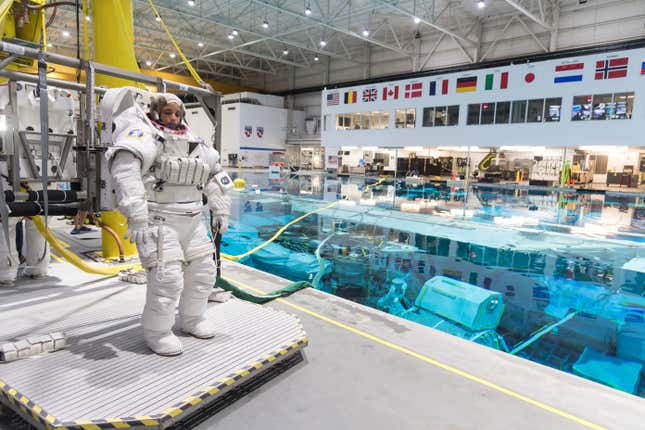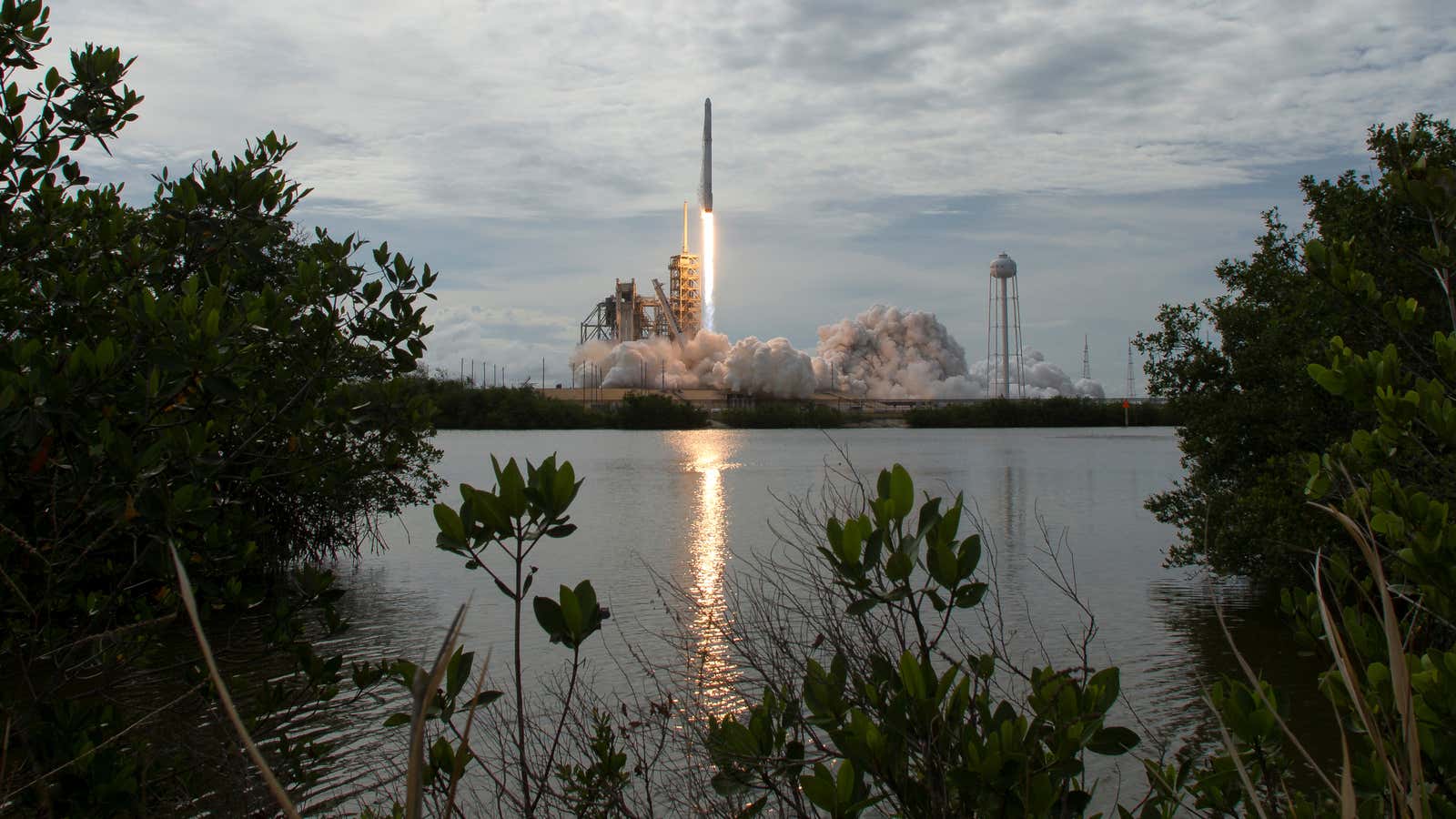Dear readers,
Welcome to Quartz’s newsletter on the economic possibilities of the extraterrestrial sphere. Please forward widely, and let us know what you think. This week, via Quartz reporter Nicolás Rivero: refurbished launchpads and an ISS first.
🚀 🚀 🚀
Florida’s “Space Coast”—a collection of launch pads and rocket factories in Brevard County, on the state’s east coast—has been a focal point for human space flight since the 1950s. It’s the spot from which the Apollo 11 astronauts ascended to the Moon in 1969. It’s where the US launched its first satellite (1958), astronaut (1961), Mars rover (1996), and space station component (1998). Between 1981 and 2011, it sent the space shuttle into orbit 135 times.
But when the US pulled the plug on the shuttle program in 2011, the Space Coast—and the residents and businesses of Brevard, who depend on the economic activity their local spaceport generates—fell on hard times. NASA laid off local contractors and mothballed its launchpads. An estimated 30,000 workers lost their jobs. At the same time, the region was still reeling from the 2008 financial crisis, which slashed local home prices by more than half and sent the unemployment rate above 12%.
The end of the shuttle program was as much of a spiritual blow as an economic one. Local residents send their kids to Astronaut High School and drive down Apollo Road. Their phone numbers bear the area code 321 to emulate launch countdowns. Statues of famous astronauts line the streets.
But after 2011, the launchpads at Kennedy Space Center and the Cape Canaveral Air Force Base went quiet. The region, which had little more than orange groves and beaches before NASA came to town, drifted listlessly without a clear purpose. The excitement of US astronaut launches had been exported to Kazakhstan, where Russian Soyuz rockets flew Americans to the space station for $75 million a pop.
Today, the Space Coast is making a comeback thanks to a flurry of launch activity from private space companies. The Kennedy Space Center has reinvented itself as a commercial spaceport, with NASA leasing out launch facilities to more than 90 private businesses. The most prominent entrant is SpaceX, which leased the launchpad used in the Apollo 11 mission from NASA in 2014, refurbished it, and put it to use for the first time in 2017. In May 2020, astronauts once again departed Brevard County bound for the International Space Station—this time, on a SpaceX Falcon rocket.
Other industry stalwarts like Blue Origin and United Launch Alliance have also leased nearby pads, as have startups like Firefly and Relativity. Boeing, Lockheed Martin, and the satellite internet company OneWeb have clustered rocket and satellite factories nearby. This year alone, the Space Coast has already seen 37 launches.
Private industry has been attracted to the Space Coast for many of the same reasons NASA was back in the 1950s. It’s relatively close to the equator, which means Earth spins a little faster. In Cape Canaveral, the ground moves east at about 914 miles (1,470 km) per hour, which gives rockets an extra boost, allowing them to carry less fuel. Plus, the Atlantic Ocean lies to the east, meaning that any falling rocket parts will splash into the ocean rather than cratering a populated area. And after decades of government investment in the site, it has a level of existing launch infrastructure and a specialized local workforce that would be expensive and time consuming to recreate elsewhere.
The return of space flight has sparked a renaissance in Brevard County. Developers are building new homes and businesses at a rapid clip. Houses have recovered their pre-financial crisis values and taxable sales have nearly doubled. The local unemployment rate is now below 4%, despite the pandemic recession. Rocket launch tourism helped bail the county out after Covid-19 outbreaks dried up cruise ship revenue; when SpaceX launched its first manned mission in May 2020, the Space Coast Office of Tourism estimated that 220,000 visitors came and spent $44 million.
The Space Coast has hitched its fortunes to its new private partners, which carries its own risks. Space is an expensive, uncertain industry. Some of the scores of businesses that have set up shop in Brevard County will surely fail, and it remains to be seen whether a couple of consolidating winners will be able to establish a sustainable revenue model in the long run. But for now, investment is flowing freely, dozens of companies are building and testing rockets, and the ground beneath Brevard County is once again rumbling with a busy schedule of orbital launches.
Your pal,
Nico
🌘 🌘 🌘
Imagery interlude
NASA astronaut Jessica Watkins will become the first Black woman to join the International Space Station’s crew for a long-term mission. The geologist, seen here preparing to do some underwater spacewalk training, will take off in April aboard a SpaceX Falcon 9. It will be her first trip to space.

🌍🌎🌏
Start your day right—and that includes your first bleary-eyed scroll through the inbox. Improve your awakening by signing up for Quartz’s Daily Brief, an efficient and enlightened guide to the news of the day.
🛰🛰🛰
Space Business will take a break for Thanksgiving next week. We’ll see you in December!
This was issue 115 of our newsletter. Hope your week is out of this world! Please send Space Coast postcards, tips, and informed opinions to [email protected].
